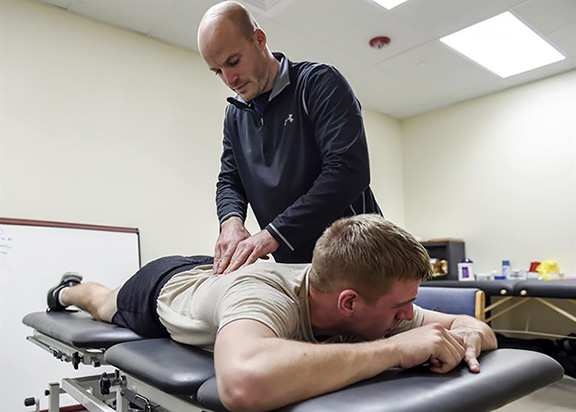Hiring an athletic trainer to your department
Hiring an athletic trainer for your school is one of the most important hires an athletic director makes in his or her career.Athletic trainers are healthcare professionals who are specifically trained to care for injuries and illnesses suffered by athletes and physically active individuals. Athletic trainers not only provide emergency care for injured athletes such as CPR, but they are also trained to evaluate, treat and rehabilitate injuries suffered during participation in athletic activity. They can develop venue-specific emergency action plans (EAP).
 A recent story from the NFHS detailed the different ways you can hire an athletic trainer, along with the pros and cons of each way. Below is an excerpt from the NFHS story.
A recent story from the NFHS detailed the different ways you can hire an athletic trainer, along with the pros and cons of each way. Below is an excerpt from the NFHS story.
With all the different ways to hire an athletic trainer, figuring out the best fit for your school can be a puzzle. There are three common approaches to athletic trainer employment in a school system: outreach contracts, direct employment by the school system, and independent athletic trainer contractors. Following is a breakdown of those approaches:
Outreach Contracts
One common approach is reaching out to external agencies like hospitals, physicians, or universities through outreach contracts. According to the ATLAS Survey, 57 percent of high schools opt for this model.
- PROS
- With this model, there is a wider pool of available athletic trainers. If the athletic trainer is sick or on vacation, a per diem or one-day replacement should be easier to find.
- When the athletic trainer is employed on this type of contract, the individual can easily collaborate with doctors and other specialists from their contracted medical facility or system.
- This model could be more cost-effective as the school or district doesn’t pay all the benefits and overhead costs like it would with a direct employee (social security, insurance benefits and retirement costs).
- CONS
- This model could possibly result in less patient-centered care. The athletic trainer might not know the athletes as well as someone who is always at school, especially if the school athletic trainer is not always the same person but rather whoever is “on duty” for that day.
- The athletic trainer might feel like an outsider and have less sense of belonging.
Direct Employment
When the school system directly employs an athletic trainer, this comes with its own set of advantages but also has some things that the district needs to be aware of when utilizing this model.
- PROS
- There should be stronger bonds developed with everyone. This includes student-athletes, coaches/teachers, and administrators. When the athletic trainer builds stronger relationships with athletes and staff, this leads to better care.
- Better patient-centered care should result from this model of employment. When the athletic trainer gets to know each athlete’s needs and preferences, a better level of trust should develop, and this leads to improved outcomes.
- When the athletic trainer is employed by the school or school district, he or she should not be called away from school duties because of a conflicting event. This can happen occasionally with outreach contracts.
- CONS
- This model will be more costly for the school district. The district will be required to pay full benefits and other employee expenses (social security, insurance benefits and retirement costs).
- The district must find the right fit. Hiring the best individual athletic trainer for the district can take time and effort. Oftentimes, there are good athletic trainers and good school districts, and they aren’t a good match for each other for various reasons.
» ALSO SEE: Former Toledo assistant coach sues school for $10M
To read the full story from the NFHS about hiring athletic trainers, click here.







